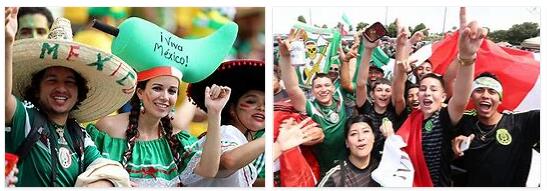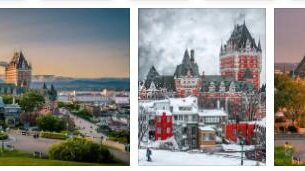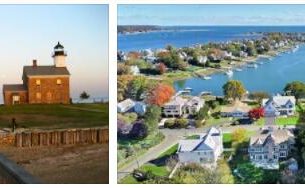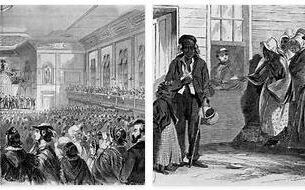Mexico Federal state, extending for the most part in North America, except for a small portion in Central America, beyond the Isthmus of Tehuantepec. The borders with the USA, to the North, and with Guatemala and Belize, to the SE, rest only partially on natural elements (Río Bravo del Norte or Río Grande; Río Usumacinta and Río Hondo); otherwise they follow geometric lines. AE and W the Mexico is wet respectively by the Gulf of Mexico and the Pacific Ocean, which to the NW engulfs itself deeply between the peninsula of Baja California and the states of Sonora and Sinaloa.
Population
According to plus-size-tips, in the context of the New World, Mexico is a country with a very ancient population, already in the last phase of the Pleistocene. The current Mexican population derives from various stratifications; the most important occurred following the Spanish colonization: the result was the formation of mestizos or mestizos, which represent about 64% of the population. The Creoles, whites born in the country, together with the ‘pure’ whites make up 15%. The Amerindians or Indios , of mainly Aztec origin, amount to 18%: present throughout the Mexico, they retain the traditional kinds of life, but in an inferior position compared to the other groups, despite the indígena Ley (2001) that protects them. The black element is scarce, often mixed with Indios and Whites (zambos). There is no shortage of European and Asian communities of different nationalities.
Alongside Spanish, the official language, indigenous languages of the Mayan group and the Nahua group are widespread among the Amerindian peoples. The religion of the great majority (88%) is Catholic, with which, however, persistent elements of pre-Christian cults are mixed in the interior areas.
DEMOGRAPHIC EVOLUTION. – At the date of the first census (1895), the Mexicans were 12,632,000; at the 2005 census there were more than 103 million, up to more than 111,200,700 at an estimate in 2009. During the 20th century, therefore, the population increased about eight times. Furthermore, between 1910 and 1920 there was a demographic crisis (civil war, emigration to the USA, epidemic of the ‘Spanish’ of 1918-19), such that 14.3 million individuals were registered in 1921, less than in 1910. In the 1930 the population went back to 16.5 million units, then to 19.6 in 1940. The increase then became very rapid, over 3% per year, due to the improvement of the diet, economic conditions and sanitary practices.: the mortality rate (4.8 ‰ in 2009, compared to 16.7 ‰ immediately after the war), including infant mortality (18.8 ‰), steadily dropped. The birth rate, on the other hand, has dropped only in the last two decades (19.7 ‰ in 2009, compared to 29 in the 1985-90 period), so the surplus has been high for a long time. The average density value (56.3 residents/km2) does not represent the very low densities of some NW states (Southern Baja California, 7 residents per km 2 ; Sonora and Chihuahua, 13) and Atlantic (Campeche, 15 residents / km 2, Quintana Roo, 23 residents). / km 2), nor those of the Center, where, however, there is no lack of contrasts, as evidenced by the densities of 656 residents / km 2 (absolute maximum) in the State of Mexico and 66 in that of Michoacán.
URBANIZATION. – In the central area, and partly also in the NE and NW, the urban phenomenon has developed above all. At the 1940 census, the urban population was 35% of the total, a share that rose, after the industrial take-off, to 77% in 2008; in recent years, the rate of growth of the urban population has slowed. All the cities have experienced a strong expansion, especially the state capitals; Mexico City is home to around one fifth (over 19 million) of the country’s population in its agglomeration. The proximity of the US border has accelerated the urbanization of the northern regions, where numerous cities have sprung up: trade, industry, tourism, border work support the economy of the cities of Tijuana, Ensenada, Mexicali, Ciudad Juárez, Nuevo Laredo, Reynosa and Matamoros. The big cities (about sixty, including over one million residents Guadalajara, Puebla and Monterrey) have taken on the role of ‘refuge centers’, even if they are unable to offer accommodation and jobs. The result was the rise of slums and the proliferation of the most uncontrollable and humble professions. The centuries-old emigration to the United States is impressive: to the 11 million individuals born in Mexico and settled in the USA, and to the 15 million descendants of Mexican immigrants, we must add illegal immigrants (estimated between 3 and 10 million), cross-border commuters. who work in US urban centers near the border and the seasonal migration of braceros (“laborers”).



